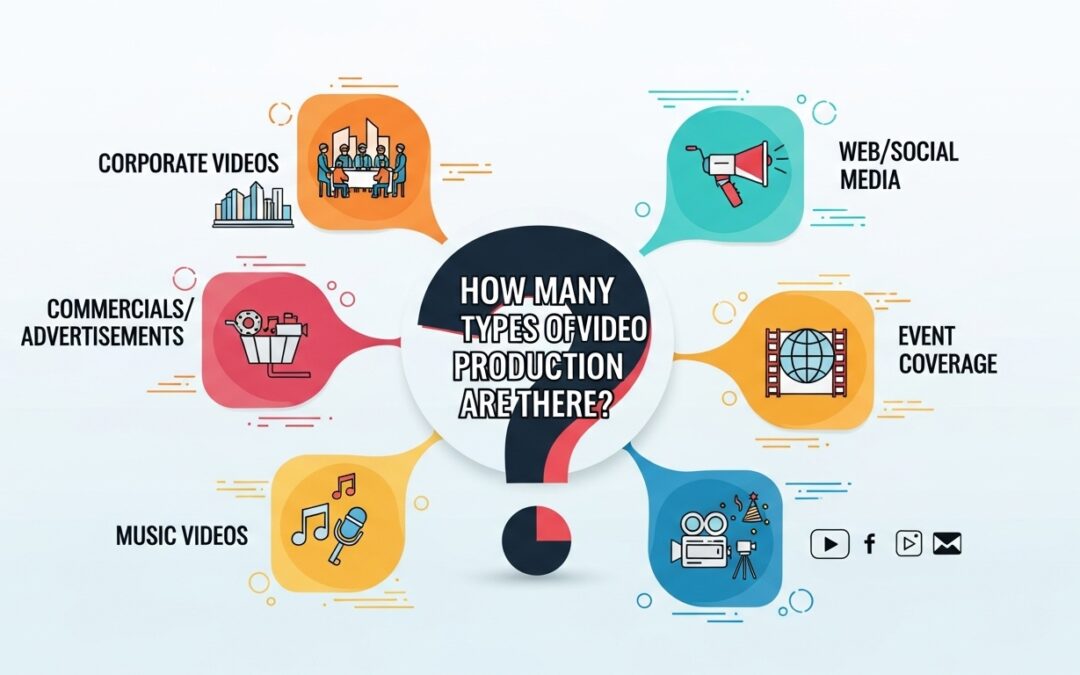Video is arguably the most effective marketing, communication, and storytelling tool for sports today. Businesses use it to attract new customers; educators count on it to instruct; creatives assemble there to present their ideas and ideals to the world. And here’s the truth: There isn’t anything like ‘one size fits all’ when you’re making videos. And how you assemble that may be the choice between a video people scroll past or one they pay attention to, depending on what you are trying to achieve. Well, that being said, let’s take a look at the most popular video creation styles and which is best for whom!
The types of video production are:
Corporate Videos
The primary focus of corporate video production is to communicate corporate information. These videos are meant to familiarize a company, flaunt its values, or explain services. In a corporate video, you can add behind-the-scenes clips, leadership interviews, or case studies.
They’re frequently employed for company websites, LinkedIn pages, and presentations. The objective is not simply to advertise, but to create trust with customers, investors, and employees. But think of this as a professional snapshot of what the firm represents.
Commercials and Advertisements
It’s possibly the most recognizable type in video production. A commercial has done its job when it cuts through the soothing din of modern life and jerks you to action. They are often nothing more than 30-second TV spots or quick social media ads, with creative storytelling and great visuals.
Explainer Videos
Explainer videos help simplify complicated information. Startups and tech firms particularly favor them. Explainer videos simplify a complex product or service to a ‘what’s in it for you’ for the viewer using easy imagery, short animation, and a simplified narrative.
These videos are typically one to three minutes long and perfect for landing pages, product demos, or sales presentations.
Educational and Training Videos
Education is not in the classroom anymore; the video is in a central position. Teaching videos can facilitate learning in the workplace, and educational content can be delivered in schools, online, or in tutorials and online courses.
The power of these videos comes from the combination of being able to see and hear the lesson repeatedly. They are organized, specific, and laid out in a way that walks people through it.
Documentary and Storytelling Videos
Documentary-style videos focus on storytelling. They hope to enlighten, inspire, or share personal experiences. Those could be used by nonprofits to raise awareness for social causes, for example, or by brands looking to tell authentic stories, or by filmmakers exploring cultural topics.
Documentary videos differ from television commercials, which are ruled by the hard sell. Instead, they form emotional bonds by telling authentic stories.
Event Videos
The real world is the video production of actual events. From company events to weddings, event videos capture the essence of the occasion and take it to a broader audience.
Event videos can also double as marketing videos for businesses. Film keynotes, workshops, and trade shows, and you’ll have content that you can re-use for weeks or months after your event is finished.
Social Media Videos
The ascendance of platforms such as TikTok, Instagram, and YouTube has created a new mode of short-form video production. They’re fast, fun, and built to be super shareable.
They frequently are copycats, embrace captions, and prioritize quick engagement over long back stories. Today, brands increasingly turn to social media videos to capture young viewers and to lift their profiles.
Music Videos
The following brings together these two classic artistic forms. Such creative ideas are normally linked with the pop music business, but brands similarly think of clever ways to liven up their content.
They also need a good sense of rhythm and creativity, as well as visual storytelling, often merging performance art with cinematic effects.
Animation and Motion Graphics
Not all videos use cameras. When explainer videos are not enough for your customers, animation and motion graphics help you tell your message in a modern, clean, and entertaining manner. These can go from 2D explainer animations to intricate 3D images.
They are helpful, for example, when you cannot afford to shoot live action, or when shooting live action would be too hard.
Final Thoughts
How many video types are there? The answer is: quite a lot. There are different types of videos, including corporate videos, commercials, documentaries, and animations, and they have specific set targets to meet. The right choice is what’s best for your goals, your audience, and the story you’re setting out to tell.
For example, video production is shifting with newer formats and styles appearing, given the tools and platforms available. But regardless of the variety, there’s one thing that’s true of all — videos that are well done have the ability to inform, inspire, and make an impact that little else can.
FAQ’S
Ads and social media videos are a staple of media campaigns because they can reach large segments of the population fast.
Corporate videos and explainer videos – for companies that want to educate and entertain their customers even more.
Yes, animation and motion graphics are now a significant part of video production.
Absolutely. It is what it is now because everyone has a smartphone with half-decent video quality and loads of easy-to-use editing tools that just keep on getting cheaper.
It depends on your goal. If it’s awareness, then a commercial or videos on social media. If you have a product to illustrate, an explainer or training video is best.

